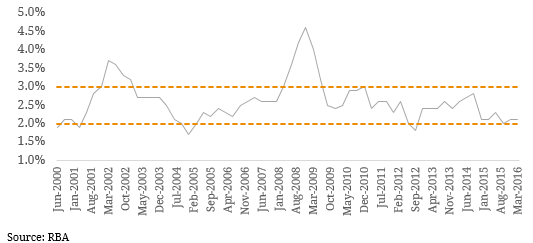Inflation-Linked Bonds (also known as ‘linkers’) can either by issued by Commonwealth of Australia, State Governments or corporations. These securities are structured so their coupon payments are linked to the current inflation rate. When coupons are set at a fixed rate, inflation erodes the purchasing power of interest payments over time. Inflation-Linked Bonds mitigate this risk and can be particularly useful for those invests at or near retirement. The value of these instruments are linked to inflation expectations. The face value of a Linker is typically adjusted each quarter for movements in the Consumer Price Index (CPI). This equates to the Nominal Value (NV). Fixed rate interest payments are usually paid quarterly in arrears on the nominal value. If deflation occurs and the nominal value falls below the face value of bond the interest payments will be based on face value. At maturity the holder receives the nominal value or the initial face value (whichever is greater). The CPI measures the price changes of a ‘basket’ of goods that cover a large proportion of expenditure for the average Australian household. Since the adoption of a 2-3% inflation by the Reserve Bank of Australia (RBA) in 1996, the CPI has broadly tracked an annual increase broadly within this range. Figure 1. CPI (excluding volatile items) against the RBA Target Inflation Range 



